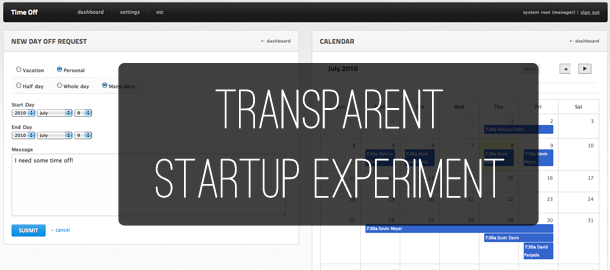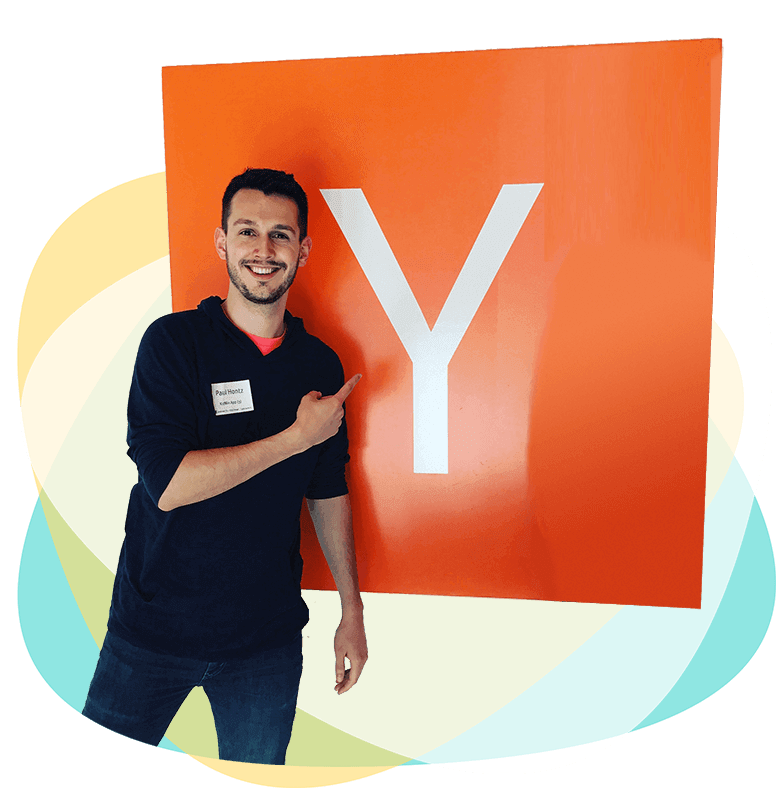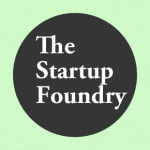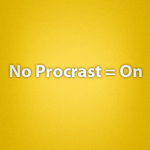Welcome to The Startup Foundry.
The Transparent Startup Experiment: A weekly look behind the scenes of “Time Off”
Paul Hontz
TSFPublished: Jun 3, 2011 3:34 pm

“I love reading stories about startups raising money, launching, or being acquired, but I want to learn how to take my startup to the next level with marketing. Is there any good examples I could check out? Where do I even start?”
I received this email from a TSF reader a few weeks ago, and I’ve been trying to figure out the best resource to send him. I sent him Noah Kagan’s Marketing plan for Mint (which is required reading), but I didn’t feel like it was enough. I wanted to be able to dissect a startup from top to bottom and show actual numbers as well as the thinking behind each decision. Beyond that, I wanted something that would teach other startups how to have the same success.
A finished product, with no marketing
A few months went by, but I still hadn’t found a resource like I described above. I was about to give up on the idea until I met Ryan Smith. Ryan is a very smart guy who loves building products. In fact, he built Time Off, an application that let’s small businesses employees easily manage vacation days, as a side project. It integrates with Google Apps and is a solid product. The problem is, Ryan wasn’t sure how to market it. I asked Ryan if I could come on board with him to do the marketing, and use Time Off as a real world case study for TSF.
We’re going to build a transparent startup that will walk TSF readers through a basic marketing plan, and share our results. This project will be a fantastic real world example to discover and learn what tactics actually work for startups. I’m very excited to bring this to TSF readers via a weekly column. It will be a fantastic resource to learn from, and I’ll do my best to explain the thinking behind our decisions. Be sure you follow TSF on Twitter @startupfoundry and on Facebook to stay current with “Transparent Startup Experiment”.
To get the ball rolling, this is the game plan that we’re going to be executing starting next week:
Our Game Plan For Time Off:
Objectives
a) $2,000 a month (in revenue) in 6 months.
b) Write up in 2 major publications
Target Users
1) Small Business
2) Google Apps for your domain users
Metrics
a) Page views
b) Number of users who sign up for trial that we convert – Who’s paying for our product (identify industries to target).
d) Measure the impact of weekly articles about Time Off on The Startup Foundry.
Registration Process
a) It’s already fast (which is really good), but it needs to be polished
b) Look at implementing Chargify instead of Google Checkout.
c) Use 37signals model of pricing.
Branding
a) Logo
b) Home page redesign
c) Improve copy on home page
d) The sales page needs to be redesigned.
e) Email through @timeoffhq.com instead of @gmail.
f) Social Proof needs a higher visual hierarchy on home and sales page
Increasing paid conversions
a) 1 month trial instead of free
b) The visual hierarchy of the site pushes customers to the free version. Let’s change this.
c) Collect emails, and have regular content go out to paid users
Blank State
a) Improve “first run” experience after signup.
What do you think? As you look at the site, do you see anything we missed?
-
👉 Filed Under.
Categorised in: Bootstrapped
Get Connected:
If you like startups, join our weekly mailing list. Good startup content, no fluff.
👇

Hi, I'm Paul Hontz.
I'm a YC alumn and I love startups. I created TSF to highlight companies I find interesting. You can learn more about me here.
Recent Posts:

The Story of Cruise (YC W14): How 4 people built a self driving car in 7 months.
Jul 8, 2014 2:35 pm

I Want To Write About Your Startup – Relaunching TSF
Jan 17, 2014 5:14 pm

How To Do B2B Email Sales
Nov 23, 2011 2:12 pm

Nasty Bug in iOS 5.0.1 OTA Update screws up Address Book on the iPhone 4S
Nov 10, 2011 11:56 pm

It’s Easier to Answer to Your Code Than Your Customers
Oct 28, 2011 2:25 pm


